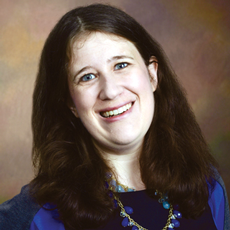
It’s no secret that while the entire nursing home industry has a labor problem, there is significant concern over whether enough geriatricians are entering the field.
The United States needs to start training about 1,600 geriatricians per year for the next decade in order to keep up with demand, one estimate posited. There are currently around 7,300 board-certified geriatricians, leading some lawmakers to propose funding around the shortage.
The New York Times, somewhat inadvertently, may have found a solution. It focused a recent article regarding how “medicine has become a stealth family-friendly profession.” It leads with a chief resident on track to become an oncologist when she found out she was expecting twins. She opted for internal medicine and geriatrics instead.
Both geriatricians Michael Wasserman, M.D., and Cari Levy, M.D., Ph.D., in interviews with me yesterday, agreed that a secret weapon in recruiting more geriatricians, especially those working in nursing homes, is to emphasize its flexibility. That’s music to the ears of many working parents.
“When it comes to post-acute and long-term care, you don’t have anyone in the waiting room,” Wasserman told me. “It’s easier to have more flexibility.”
He also said many women often have had their own caregiving experience, which may lead to an empathy with families and residents.
“It lends itself in a way to focus on expanding the field,” he says. “We need fewer physicians who go into long-term care because they think it’s a way to make money that doesn’t involve as much work. We need more folks who go into it because they care, but also want to find a lifestyle that works.”
Levy, the president of The Society for Post-Acute and Long-Term Medicine (AMDA), said she’s talked up nursing home medicine for years to medical students and residents because of its flexibility. Nursing home physicians often can set their own schedules, and also have no office overhead.
“I had a colleague who had eight children and she would get them all off to school and go see patients,” Levy said. “She’d go back at night.”
Wasserman, the president of the California Association for Long Term Care Medicine (CALTCM), points out that many working parents are struggling to get their families out the door in the morning.
“If you’re a working mom and have to drop your kids off in the morning and you don’t get to the facility until 10 a.m., it’s not a big deal. I’ve seen physicians who bring their kids with them, which in long-term care is possible,” he said.
Putting other obligations aside, for Levy personally, being in a clinic or on a schedule was anxiety-provoking. By being in a nursing home “I can be spontaneous when a family is available to talk. There’s not that horrible pressure.”
Nursing home medicine is “this well-kept secret,” she said.
She highlighted a few ways to help spread the world to future physicians. Geriatric rotations often don’t happen for students into year two or three, she said. Students often become comfortable in a hospital, so telemedicine visits can be critical to establishing a relationship with a nursing home.
As the New York Times article points out, and which I’ve tried to stress, women aren’t the only ones who want family-friendly jobs in an era where work is demanding more and more hours. There’s nothing wrong with wanting to see your child grow up while still retaining professional ambition. It’s a good reminder for all nursing home clinicians, physicians or otherwise, to talk up the rewards and diminish the misconceptions about their work.
“This is a really satisfying path. All of us clinicians are hungering for the ability to connect with people, and there’s no better place to do it,” Levy said.
Follow Deputy Editor Elizabeth Newman @TigerELN.




